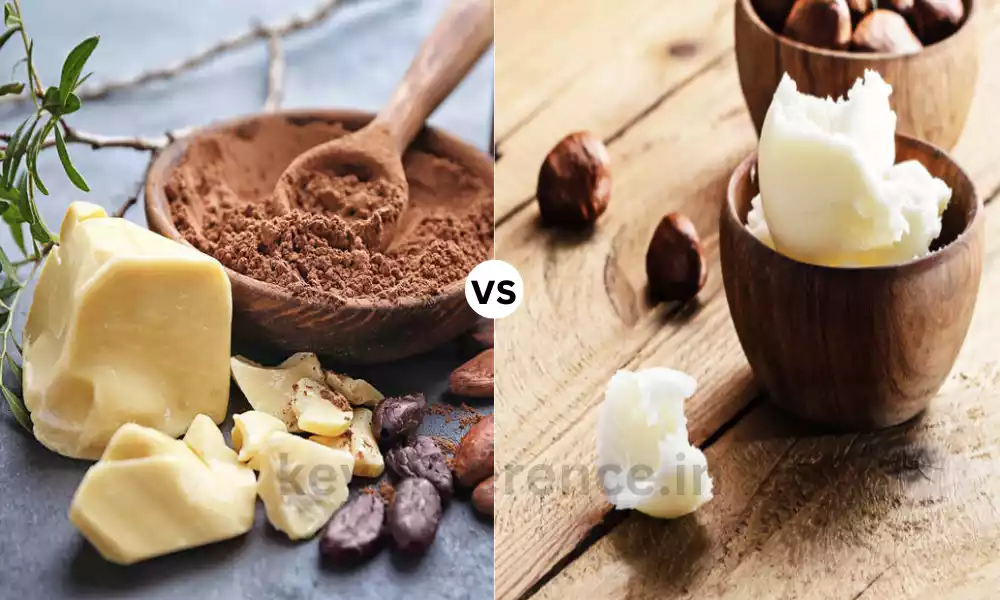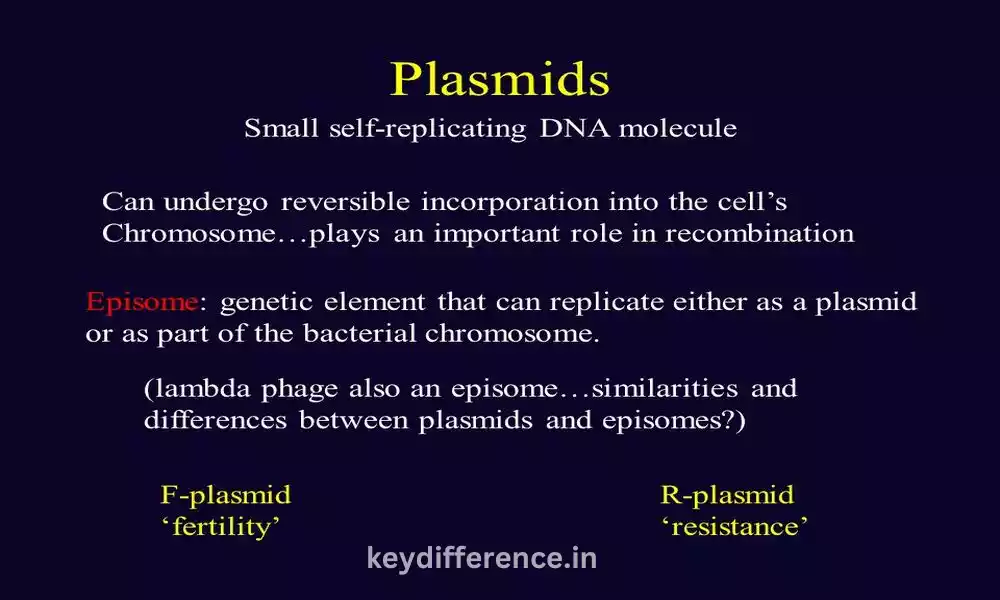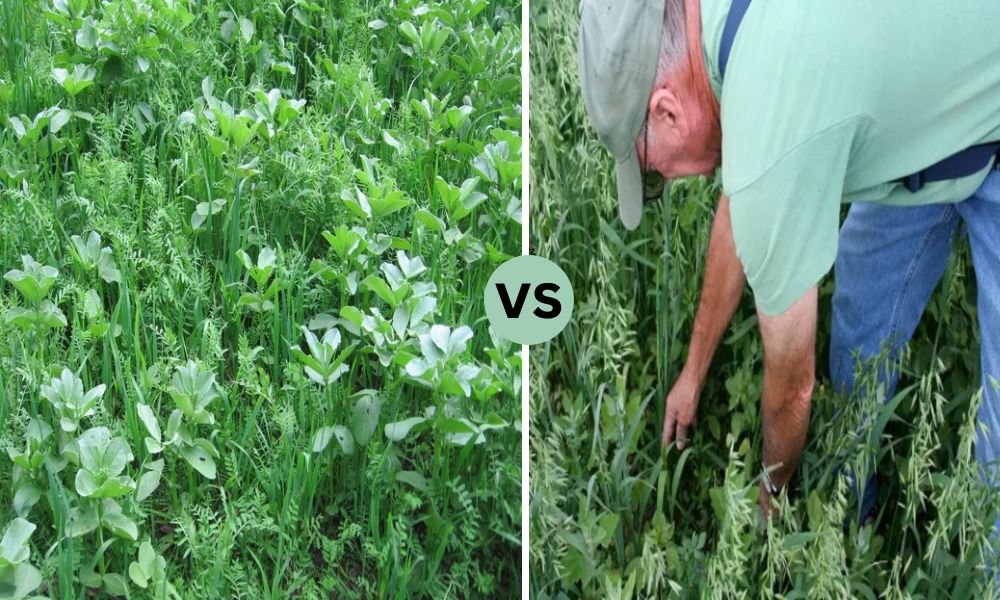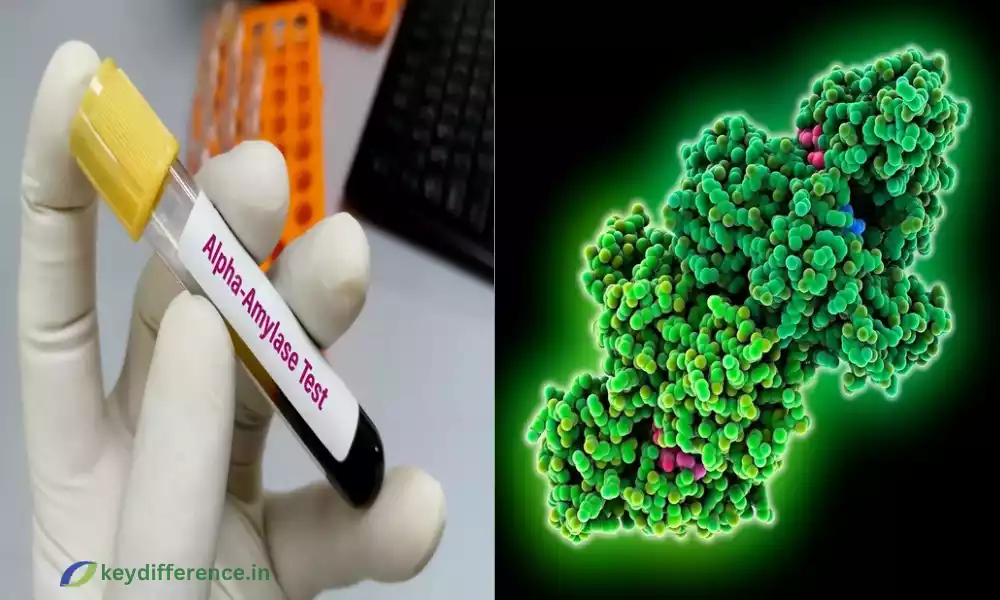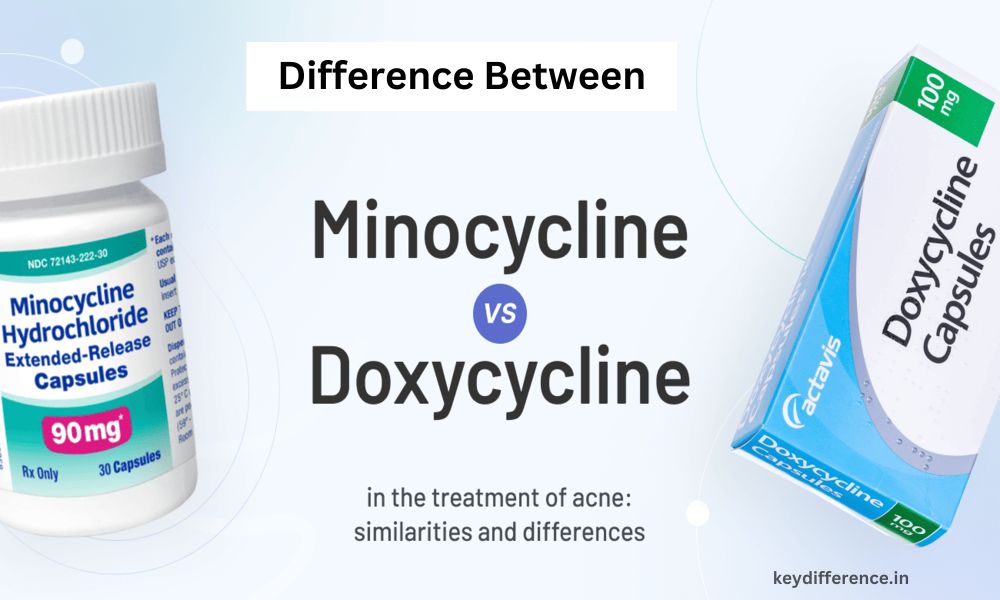Cocoa Butter and Shea Butter are two common natural ingredients known for their diverse uses in a variety of industries. While both are recognized for their moisturizing properties the two differ with respect to their sources as well as compositions and applications. We will explore the differences between shea and cocoa butter, and shed some light on their distinctive qualities and benefits.
What is Cocoa Butter?
Cocoa butter can be described as a naturally edible fat extracted from cacao beans. Vegetable fat is an essential ingredient in the production of chocolate and contributes to the smooth texture and delicious flavor of chocolate items.

Cocoa butter is also extensively used in the skincare and cosmetic industries due to its nourishment and moisturizing properties. It is a solid substance at room temperature, but it has a low melting point that allows it to melt upon contact with skin, making it a preferred ingredient in a variety of personal and beauty skincare products.
What is Shea Butter?
Shea butter can be described as a naturally occurring fat extracted from the nuts that are part of the Shea tree (Vitellaria paradoxa) that is native to Africa. Also called karate butter, it has a thick white consistency that is widely acclaimed for its skin-nourishing and moisturizing properties.
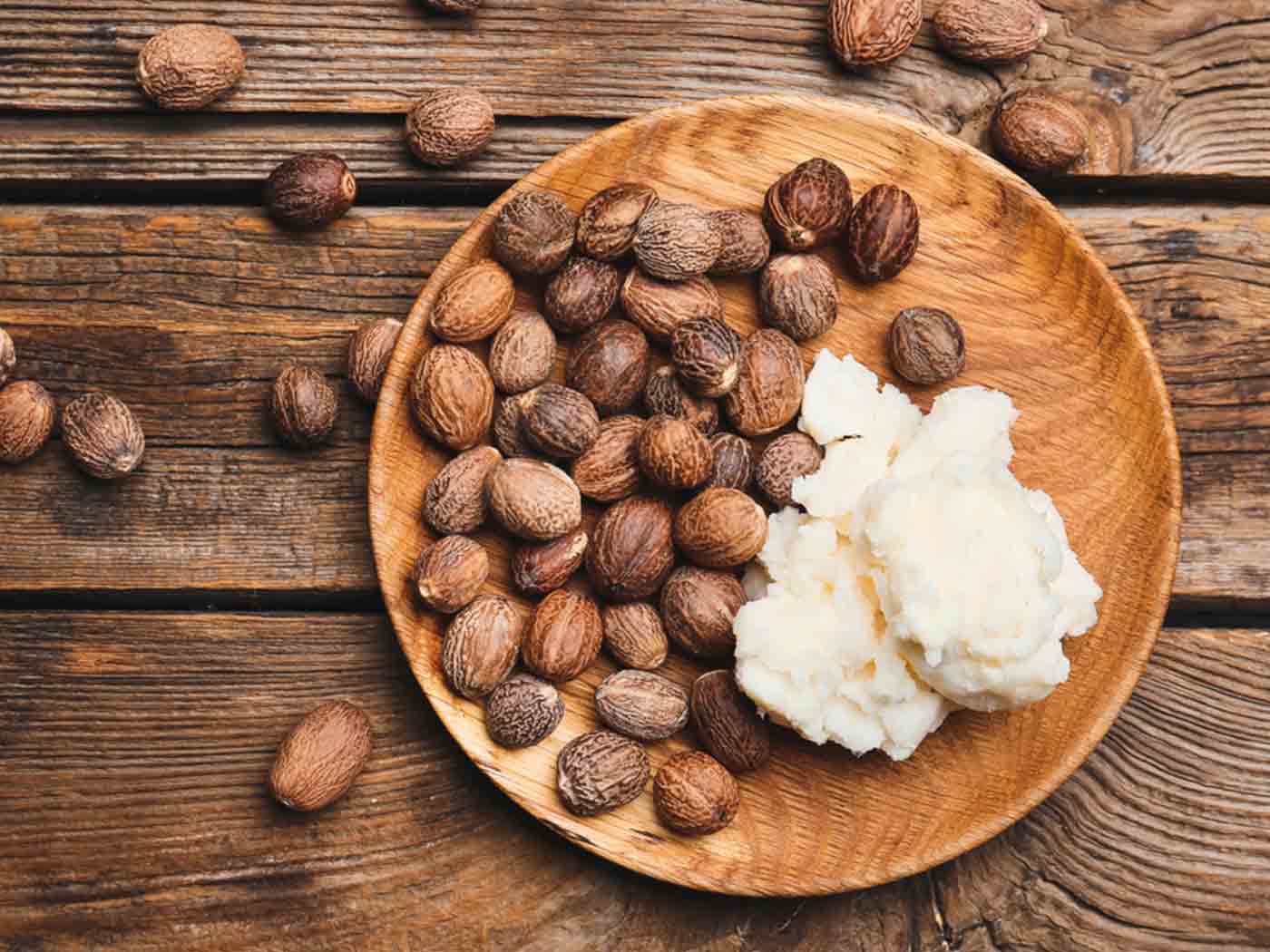
Shea butter has a high quantity of fatty acids as well as vitamins, which makes it a prominent ingredient in skincare, cosmetics, and hair care products. It’s inert at room temperature, but it melts on contact with the skin, delivering the skin with hydration and increasing its elasticity. Shea butter also is a traditional ingredient in African cooking and medicine.
Comparison Table of Cocoa Butter and Shea Butter
| Characteristics | Cocoa Butter | Shea Butter |
|---|---|---|
| Source | Extracted from cacao beans | Extracted from the nuts of the shea tree |
| Composition | Rich in fatty acids | High in fatty acids and vitamins |
| Physical State at Room Temp. | Solid | Solid |
| Melting Point | Relatively low | Melts at body temperature |
| Color and Aroma | Light yellow, mild chocolate aroma | Ivory-colored, nutty aroma |
| Nutritional Properties | Antioxidant properties, vitamin content | Antioxidant properties, vitamin content |
| Common Uses | Chocolate production, cosmetics | Cosmetics, skincare, medicinal, culinary |
| Geographic Origin | West Africa, Latin America, Southeast Asia | Mainly West Africa |
| Sustainability Focus | Issues with deforestation, fair trade | Sustainable harvesting, community involvement |
| Price Variations | Varies globally | Varies globally |
| Accessibility | Widely available | Widely available |
This table provides a concise overview of the key characteristics, uses, and origins of cocoa butter and shea butter, highlighting their similarities and differences.
Nutritional and Therapeutic Properties
| Properties | Cocoa Butter | Shea Butter |
|---|---|---|
| Antioxidant Properties | Yes | Yes |
| Vitamin Content | Rich in vitamin E | Rich in vitamins A, E, and F |
| Skin Benefits | Deep hydration and moisturization – Improves skin elasticity – Helps in reducing stretch marks – May aid in scar reduction – Softens and smoothens the skin | Deep moisturization and hydration – Promotes skin elasticity and suppleness – Addresses dry skin conditions – Contains anti-inflammatory properties – Provides relief for irritated skin |
| Other Uses | Used in lip balms, lotions, and soaps | Used in creams, lotions, soaps, shampoos, and conditioners |
Both cocoa butter and shea butter offer impressive nutritional and therapeutic properties for the skin. While cocoa butter is rich in vitamin E and is known for its deep moisturizing capabilities, shea butter provides a broader range of vitamins (A, E, and F) and exhibits anti-inflammatory properties. These attributes contribute to their popularity in various skincare and cosmetic products.
Sustainability and Environmental Impact
| Sustainability and Environmental Impact | Cocoa Butter | Shea Butter |
|---|---|---|
| Deforestation Concerns | Yes, associated with cocoa farming | Generally lower impact, but not immune |
| Fair Trade Initiatives | Increasing focus on fair trade practices | Growing emphasis on fair trade and sustainability |
| Sustainable Harvesting Practices | Efforts to promote sustainable farming | Traditionally harvested in agroforestry systems, promoting sustainability |
| Community Involvement | Varied, with initiatives for community development | Traditionally harvested by local communities, often supporting local economies |
| Environmental Considerations | Some environmental concerns due to monoculture in cocoa farming | Generally considered more eco-friendly, but depends on harvesting practices |
In terms of sustainability and environmental impact, both cocoa butter and shea butter face challenges, but shea butter tends to have a more favorable environmental profile.
Cocoa farming has been associated with deforestation and monoculture practices, contributing to environmental concerns.
However, there are increasing efforts to address these issues through sustainable farming practices and fair trade initiatives.
Shea butter, on the other hand, is often harvested in agroforestry systems, where the shea tree is grown alongside other crops. This method is considered more sustainable and has a lower environmental impact.
Additionally, shea butter production traditionally involves local communities, providing economic benefits and contributing to social sustainability.
Ultimately, the sustainability and environmental impact can vary depending on specific practices, certifications, and initiatives within each industry.
A common ingredient in cosmetics and skincare
Both shea and cocoa butter are commonly used in skincare products and cosmetics due to their moisturizing properties as well as potential advantages for the skin.
This is a brief description of their functions in the skincare and cosmetic industry:
- Cocoa Butter:
- Moisturizing Agent: Cocoa butter is known for its ability to deeply moisturize. It is a barrier that protects the skin and helps to hold in moisture.
- Emollient Property: It has emollient properties that help in smoothing and softening skin.
- Aroma: The mild chocolate scent of cocoa butter could provide a pleasant aroma to cosmetics.
- Shea Butter:
- Intense Moisturization: Shea butter can be extremely efficient in moisturizing and replenishing the skin, which makes it a favorite option for sensitive and dry skin.
- It is rich In Vitamins: Shea butter has vitamins A, E, and F, which provide additional nourishment to the skin.
- Anti-Inflammatory It is a natural anti-inflammatory that can help in treating skin irritations or inflammations.
- Collagen Production: Shea butter may support collagen production, promoting skin elasticity.
Common Cosmetic and Skincare Products:
- Both kinds of butter can be found in creams, lotions, and body butter. They provide the most luxurious and nutritious feel.
- Lip balms usually contain these butters to provide moisturizing properties.
- Creams for stretch marks may contain shea butter or cocoa for their capacity to diminish their appearance.
- Cleansers and soaps can contain these ingredients to help with skin conditioning properties.
Shea butter is a versatile ingredient in the cosmetics and skincare industries, assisting in the development of cosmetics that address a variety of skin issues and provide a pleasant sensory experience.
Similarities Between Cocoa Butter and Shea Butter
Shea butter and cocoa butter have a lot in common which makes them both an ingredient that is used in a variety of applications.
Here are some of the common characteristics that they share:
- Natural Fats:
- Both shea and cocoa butter are both natural fats obtained from plants.
- Solid at Room Temperature:
- The butter both are firm at room temperature and possess the same melting point, which is relatively low which allows them to melt on contact with skin.
- Moisturizing Properties:
- Shea butter and cocoa butter are renowned for their moisturizing properties. They are effective in alleviating and preventing dry skin.
- Skin-Nourishing:
- Both kinds of butter have fatty acids which contribute to skin nourishment and also aid in improving skin elasticity.
- Cosmetic and Skincare Uses:
- They are widely employed in the cosmetic and skincare industry and are found in a variety of items like creams, lotions, soaps, lip balms, and more.
- Emollient Qualities:
- Shea butter and cocoa butter work as emollients giving a smooth and soft feel to your skin.
- Vitamin Content:
- While their vitamin compositions differ, they both have beneficial vitamins for the skin. Cocoa butter is high in vitamin E Shea butter is rich in vitamins A, E, and F.
- Used in Hair Care:
- Shea butter and cocoa butter are used in hair care products such as shampoos and conditioners. They contribute to hair’s moisture and manageability.
- Anti-Inflammatory Properties:
- Both butters contain anti-inflammatory properties. This makes them suitable for soothing the skin that is inflamed or irritated.
- Traditional and Cultural Uses:
- Shea butter and cocoa butter have been used for centuries in many cultures, including culinary and medicinal applications.
It is important to remember that there are distinct differences in their ingredients and scents, as well as specific advantages that can make one butter better for particular skin kinds.
Conclusion
Shea butter and cocoa butter are natural fats that come from plants, and share similarities in their consistency of solids at the temperature of room as well as moisturizing properties. They also share widespread use in skincare and cosmetics.
While both have benefits to the skin they differ in the composition of fatty acids, their nutritional content, and geographical source. Knowing the differences makes it possible to make more informed decisions when choosing the most popular ingredients for your personal care routines and beauty routines.

